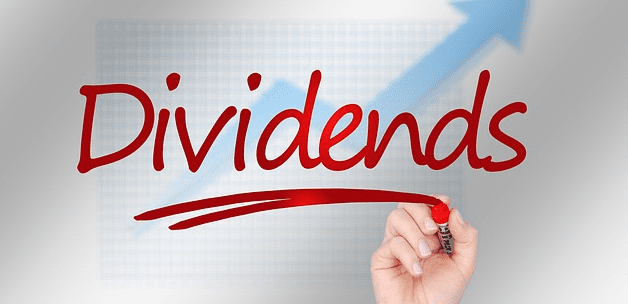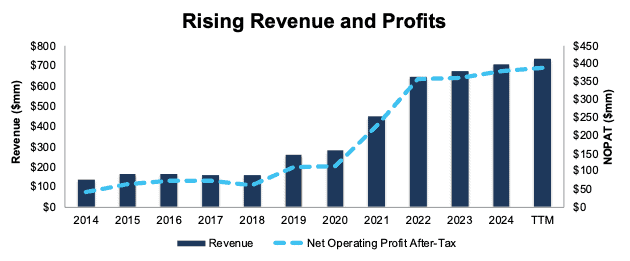Every now and then, a fruit tree might produce an unusually large harvest because of a rare stretch of perfect weather. Similarly, a company might record a temporary spike in profits and pay it out as a special dividend. But, that doesn’t mean the results are repeatable year after year.
The best fruit trees consistently bear fruit because their roots are deep, soil is rich, and environment is stable. Similarly, the best dividend stocks are supported by quality, recurring cash flows and stable business that ensure future cash flows and dividend payouts.
Investors who search for trees during outlier seasons or focus only on the tallest trees (highest dividend yields) often end up with trees that produce no fruit when the seasons change. For example, in What Most Retirees Miss: The Dividend Shortcut Investors Are Using to Win 2025, we explain how there are three types of bad dividend stocks and what makes a good dividend stock.
We designed our Safest Dividend Yields Model Portfolio to get investors the best and most reliable dividend stocks. It only includes companies that generate sufficient cash flows to support dividend payments and stocks that earn our Attractive or Very Attractive rating. This Model Portfolio aims to give you the best of both worlds: safety and upside potential.
Below you will find a free pick from the latest edition of our Safest Dividend Yields Model Portfolio. This summary is not a full Long Idea report, but it will give you insight into the rigor of our research. Feel free to share this report with friends and colleagues.
We update this Model Portfolio monthly. October’s Safest Dividend Yields Model Portfolio was updated and published for clients on October 22, 2025.
Free Stock Pick: Global Ship Lease, Inc. (GSL: $31/share)
Global Ship Lease (GSL) is the featured stock in October’s Safest Dividend Yields Model Portfolio.
Global Ship Lease has grown revenue and net operating profit after tax (NOPAT) 17% and 24% compounded annually, respectively, since 2014. The company’s invested capital turns rose from 0.2 in 2014 to 0.3 in the trailing-twelve-months (TTM), while its NOPAT margin improved from 30% to 53% over the same time. Rising NOPAT margins and invested capital turns drive the company’s return on invested capital (ROIC) from 5% in 2014 to 16% in the TTM.
Figure 1: Global Ship Lease’s Revenue & NOPAT Since 2014
Sources: New Constructs, LLC and company filings
Free Cash Flow Exceeds Regular Dividend Payments
Global Ship Lease has increased its regular dividend from $0.25/share in 1Q22 to $0.53/share in 3Q25. The current quarterly dividend, when annualized provides a 6.9% dividend yield.
The company’s free cash flow (FCF) easily exceeds its regular dividend payments. From 2022 through the first half of 2025, the company generated $1.1 billion (74% of current enterprise value) in FCF while paying $230 million in dividends. See Figure 2.
Figure 2: Global Ship Lease’s FCF Vs. Dividend Payments Since 2022
Sources: New Constructs, LLC and company filings
As Figure 2 shows, this company’s dividends are backed by a history of reliable cash flows. Dividends from companies with low or negative FCF are less dependable since the company might not have the cash to sustain paying dividends.
GSL Is Undervalued
At its current price of $31/share, GSL has a price-to-economic book value (PEBV) ratio of 0.2. This ratio means the market expects the company’s NOPAT to permanently fall 80% from TTM levels. This expectation seems overly pessimistic given that the company has grown NOPAT by 24% compounded annually since 2014 and 26% compounded annually since 2019.
Even if the company’s:
- NOPAT margin immediately falls to 20% (compared to 53% in the TTM) through 2034,
- revenue grows at consensus estimates in 2025 (4%) and 2026 (-2%), and
- revenue continues to fall 2% (below CAGR of 17% over the last decade) compounded annually through 2027 – 2034, then
the stock would be worth $45/share today – a 45% upside. In this scenario, the company’s NOPAT would fall 11% compounded annually through 2034. Contact us for the math behind this reverse DCF scenario.
Should the company’s NOPAT grow more in line with recent growth rates, the stock has even more upside.
Critical Details Found in Financial Filings by Our Robo-Analyst Technology
Below are specifics on the adjustments we make based on Robo-Analyst findings in this featured stock’s 10-K and 10-Qs:
Income Statement: we made nearly $80 million in adjustments with a net effect of removing just under $40 million in non-operating expenses. Professional members can see all adjustments made to the company’s income statement on the GAAP Reconciliation tab on the Ratings page on our website.
Balance Sheet: we made just under $750 million in adjustments to calculate invested capital with a net increase of over $250 million. One of the most notable adjustments was for asset write downs. Professional members can see all adjustments made to the company’s balance sheet on the GAAP Reconciliation tab on the Ratings page on our website.
Valuation: we made nearly $1.2 billion in adjustments with a net decrease in shareholder value of just under $350 million. The most notable adjustment to shareholder value was for total debt. Professional members can see all adjustments to the company’s valuation on the GAAP Reconciliation tab on the Ratings page on our website.
This article was originally published on October 31, 2025.
Disclosure: David Trainer, Kyle Guske II, and Hakan Salt receive no compensation to write about any specific stock, style, or theme.
Questions on this report or others? Join our online community and connect with us directly.


